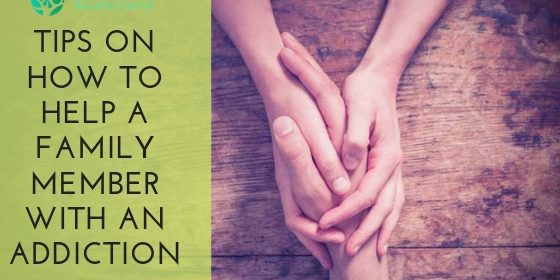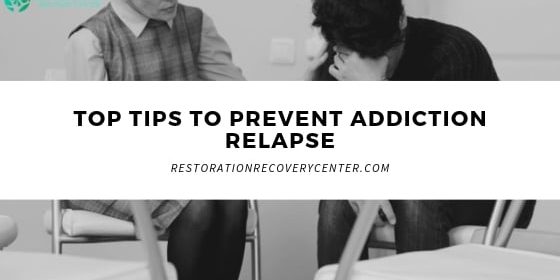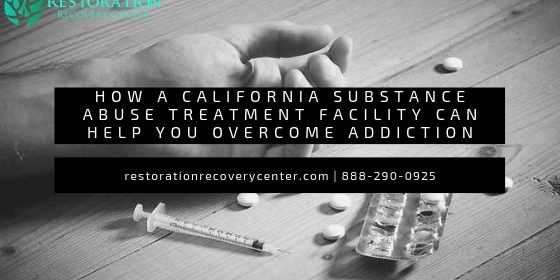How Do I Know I Went Through Trauma?
Many words in the English language are warped into meaning something entirely different than their original intent. Trauma is one of those words that is sometimes used too liberally and other times not liberally enough. Some people use it to describe a bad experience that left an impression on them, like finding out Santa Claus isn’t real. Others reserve the word to describe exclusively physical abuse or other severely horrific events. However, understanding the psychological definition of trauma can help people identify when they are going through trauma. Furthermore, Restoration Recovery Centers believes that being able to identify when people are going through trauma can help them manage their substance use disorder (SUD) and mental health symptoms.
Am I Going Through Trauma?
Many people with SUD have suffered through one or multiple traumatic events. Since trauma can be very subjective, sometimes it is challenging to pinpoint traumatic moments in a person’s life that caused intense emotional responses or triggers to certain situations, environments, people, or objects. The best way to understand trauma is by its psychological definition.
What Is Trauma?
Trauma is a behavioral health concern that may require psychological treatment to process trauma-related memories. According to the Substance Abuse and Mental Health Services Administration (SMASHA), trauma can be defined as an event or circumstance resulting in physical harm or emotional harm, or a life-threatening event that has a lasting detrimental effect on the person’s:
- Mental health
- Physical health
- Emotional well-being
- Spiritual well-being
- Social well-being
Some events that may qualify as trauma-inducing include:
- Natural disasters
- Sexual or physical abuse
- Domestic violence
- Severe medical injury, illness, or procedure
- Community violence
- Neglect
- Extreme grief
- School violence
- Loss
- Kidnapping
Trauma can affect individuals, communities, families, and generations. However, many people who experience trauma can healthily process the event and move forward with their lives. How someone reacts to a traumatic event is personal and may vary across a variety of factors. Generally, people with a strong support system will be more resilient when processing traumatic memories. Personality also comes into play – some people are more prone to negative trauma reactions than others.
WhatIis PTSD?
Many people who experience trauma will be able to mitigate their trauma symptoms on their own. However, if trauma symptoms persist for a long period of time, then the person might meet the criteria for a post-traumatic stress disorder (PTSD) diagnosis. If symptoms persist even longer, the person might meet the criteria for a chronic PTSD diagnosis.
To be diagnosed with PTSD, a person must experience trauma symptoms for more than a month that interfere with the person’s ability to function in their day-to-day life. According to the National Institute of Mental Health (NIH), the criteria for PTSD include experiencing the following symptoms for at least a month:
- Re-experiencing symptoms: A person must experience one symptom of re-experiencing, which includes flashbacks, bad dreams, and frightening thoughts.
- Avoidance symptoms: A person must experience one symptom of avoidance, which includes staying away from places, events, or objects, or suppressing thoughts or feelings related to the traumatic experience.
- Arousal and reactivity symptoms: A person must experience two symptoms of arousal and reactivity, which include being easily startled, feeling tense, difficulties sleeping, and having angry outbursts
- Condition and mood symptoms: A person must experience two symptoms of condition and mood, which include trouble remembering key features of the traumatic event, negative thoughts and feelings toward oneself or the world, distorted feelings of guilt or blame, and loss of interest in once enjoyable activities.
Why Are People in Denial When Going Through Trauma?
There are many reasons why someone might be in denial that they are going through a traumatic event. This could stem from a misremembering or loss of the traumatic memory. Sometimes when an event or situation is too traumatic to process, it can cause what is known as dissociative amnesia. In a “flight” reaction to a harmful memory, a person might forget key elements of the traumatic event, making it easier for a person to explain away their traumatic symptoms.
On the other hand, some people may be in denial of the trauma they’ve experienced because of misconceptions about the definition of trauma. For instance, a person might think an experience isn’t “bad enough” to be considered a traumatic experience. However, this is a fallacy because trauma is defined by how a person perceives an experience.
What’s the Connection Between Trauma and SUD?
There is a high comorbidity between trauma and SUD. About 59% of young people who’ve been diagnosed with PTSD have a dual diagnosis of SUD. Many people who develop PTSD do so because of a lack of a support system to help them process their emotions after the traumatic event. Often, such people lack the resources to regulate their emotions and healthily process the traumatic memory. When a person lacks the proper resources to cope with traumatic events, it can cause them to turn to substances to manage their trauma symptoms, which can lead to misuse and dependency.
How Do I Heal When I’m Going Through Trauma?
Both psychological and pharmacological treatments can be used to treat trauma depending on the person’s symptoms. One of the most popular forms of psychotherapy that is used to treat people struggling with trauma is cognitive-behavioral therapy (CBT). This type of therapy helps people reprocess their traumas by changing their thoughts and perspectives surrounding the traumatic event. In doing so, the person can manage their trauma reactions.
Another popular form of psychotherapy for people dealing with trauma is eye movement desensitization and reprocessing therapy (EMDR). EDMR uses a moving object, usually a therapist’s finger, to stimulate lateral eye movement while recounting the traumatic event. This helps the person process the traumatic memory in a healthier way that provides a new perspective of the event or events. Many recovery facilities, like Restoration Recovery Centers, provide trauma-focused treatment to help people heal from trauma.
Trauma is often the root of a person’s SUD. Being able to understand your emotions and thoughts around a traumatic event can help you reprocess and be at peace with the memory. At Restoration Recovery Centers, we believe that a trauma-focused approach to treatment is the only way to successfully treat SUD. We provide a variety of therapies to help manage trauma symptoms, such as CBT, trauma therapy, and other holistic services. Our facility is surrounded by wooded areas where you can find inner peace. If you or someone you know is struggling with substance use, call (888) 290-0925 to learn how Restoration Recovery Centers can help you restore your life’s purpose and heal from addiction.






